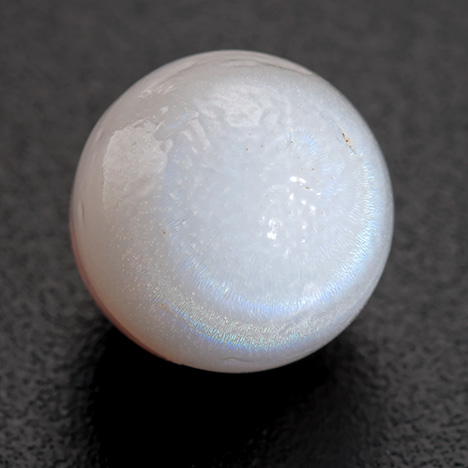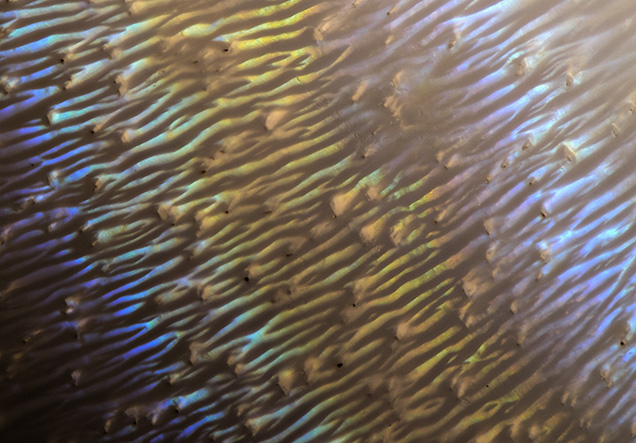Iridescent Spondylus Pearl

The optical phenomenon of iridescence is frequently observed in gem materials, but it is uncommon to see iridescent colors in porcelaneous pearls. Such pearls are appreciated for their prominent eye-visible flame structures, such as those seen in some Queen conch and Melo pearls. Pearls from these gastropods, along with Spondylus species bivalves, are routinely submitted to GIA’s laboratory. A bluish reflective sheen is a common feature of the flames seen in Spondylus pearls (Fall 2014 Lab Notes, pp. 241–242; Winter 2015 Lab Notes, pp. 436–437).
A 6.97 ct bicolored white and pink Spondylus pearl (figure 1) was recently examined at GIA’s Carlsbad laboratory. When a single white light was used to illuminate the pearl, a prominent reflective blue coloration over its fine parallel flame structure was visible on the white portions. This created a pseudochatoyant effect similar to other Spondylus pearls previously examined. What was particularly captivating about this pearl was that iridescent colors ranging from purplish to a dominant blue were seen on the fine, well-formed flame structure when a fiber-optic light was applied in certain directions (figure 2).

As with many gemstones and nacreous pearls, the spectral colors seen on the flame structure are the result of the interference effect of light reflecting off of structural features. In this case, the thickness of the aragonite lamellae permits white light to be diffracted into most of the visible light wavelengths, resulting in a colorful effect.
The iridescence characteristics of this pearl have not been encountered to such a marked degree in any other porcelaneous pearl examined by GIA.



